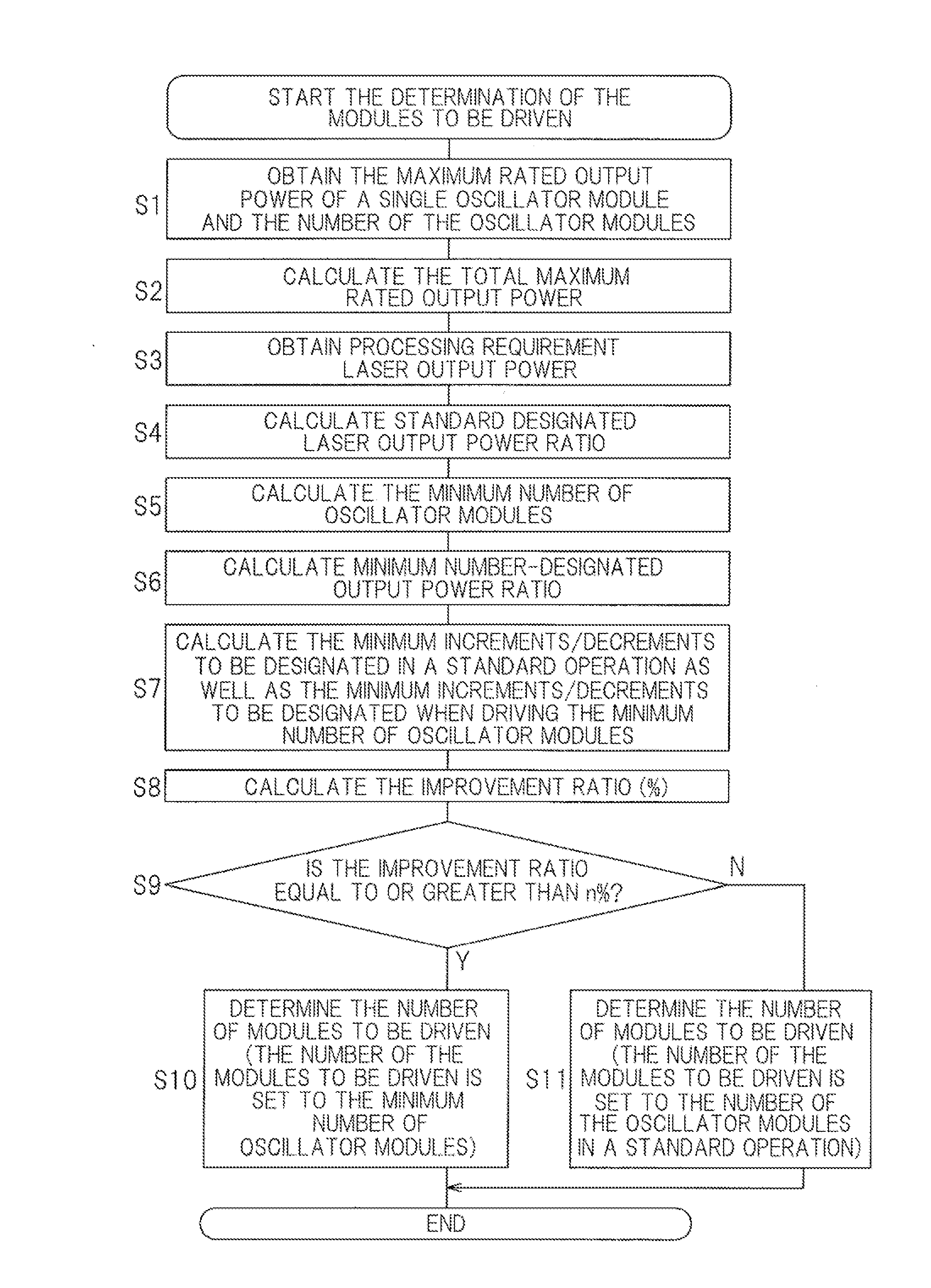Laser oscillator controller
a laser oscillator and controller technology, applied in lasers, laser beam welding apparatus, manufacturing tools, etc., can solve the problems of poor control resolution of output, unstable laser processing operation, and difficult control of laser oscillators within the range of less than 10% of their maximum rated outpu
- Summary
- Abstract
- Description
- Claims
- Application Information
AI Technical Summary
Benefits of technology
Problems solved by technology
Method used
Image
Examples
Embodiment Construction
[0025]An embodiment of the present invention will be described in connection with FIGS. 1 to 3. FIG. 1 shows a block diagram of a schematic configuration of a laser processing system in its entirety. The laser processing system may include a laser processing machine 1, a laser oscillator 2, a laser processing controller 3 that controls the laser processing machine 1, and a laser oscillator controller 4 that controls the laser oscillator 2. The laser processing machine 1 may include, for example, a laser cutting machine for cutting sheet materials, a laser engraving machine for engraving patterns or markings, a laser drilling machine for drilling holes in a substrate, a laser ablation machine for ablating off the outer surface of a solid object, a laser welding machine for performing a laser welding operation, etc. The laser processing machine 1 may include a laser head 5 that directs a laser beam to a workpiece (not shown). If the laser processing machine 1 includes a laser cutting ...
PUM
| Property | Measurement | Unit |
|---|---|---|
| Power | aaaaa | aaaaa |
Abstract
Description
Claims
Application Information
 Login to View More
Login to View More - R&D
- Intellectual Property
- Life Sciences
- Materials
- Tech Scout
- Unparalleled Data Quality
- Higher Quality Content
- 60% Fewer Hallucinations
Browse by: Latest US Patents, China's latest patents, Technical Efficacy Thesaurus, Application Domain, Technology Topic, Popular Technical Reports.
© 2025 PatSnap. All rights reserved.Legal|Privacy policy|Modern Slavery Act Transparency Statement|Sitemap|About US| Contact US: help@patsnap.com



